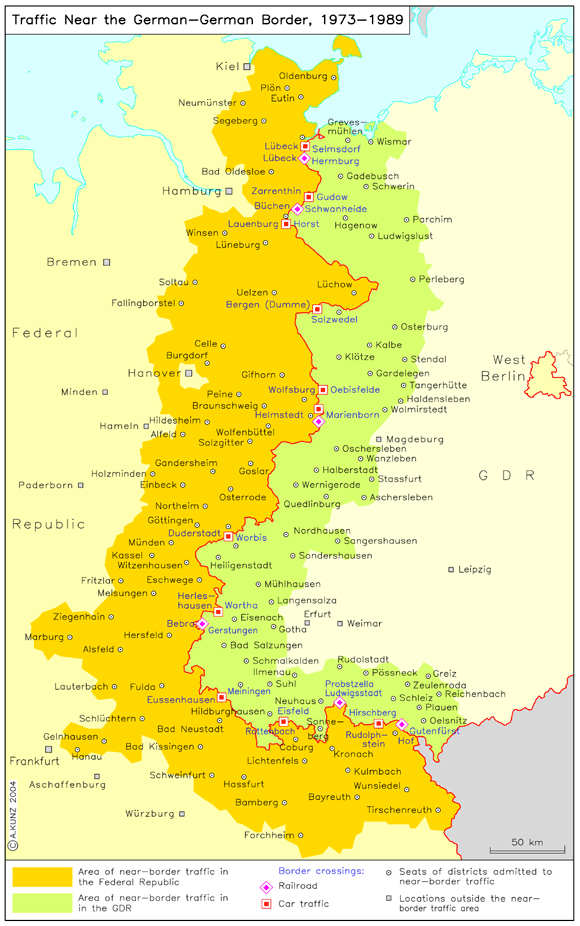|
Traffic Near the Inner-German Border (1973-1989)
The Basic Treaty of 1972 improved opportunities for travel and visitation across the inner-German border. Residents of border regions on both sides (shown in color on the map) were given the right to apply for entry without any particular reason to visit persons on the other side of the border. The map shows the areas in both German states to which this agreement applied. Aside from Eisenach, almost all of the large border cities (Magdeburg, Weimar, Erfurt) on the GDR side were excluded from the purview of this visitation agreement. Likewise, cities on the Federal Republic side were also excluded. They included Kiel, Hamburg, Frankfurt, Würzburg, and Hanover, the latter of which constituted an exclave within this border zone. Thus, large parts of urban populations could not take advantage of the extended visiting privileges. Moreover, there was no legally binding guarantee that citizens of the Federal Republic could enter the GDR. Visitor applications from citizens of the GDR, as a rule, were only approved for women over 60 and men over 65 years of age. Please click on print version (below) for a larger version with enhanced resolution.

IEG-MAPS, Institute of European History, Mainz / © A. Kunz, 2004.
|














 print version
print version return to map list
return to map list previous map
previous map